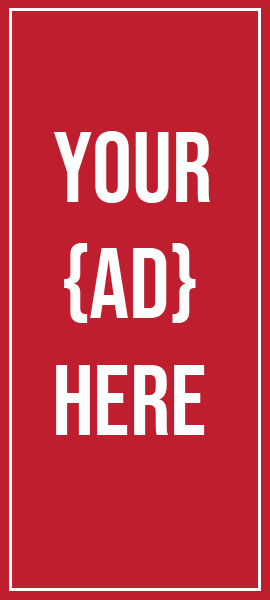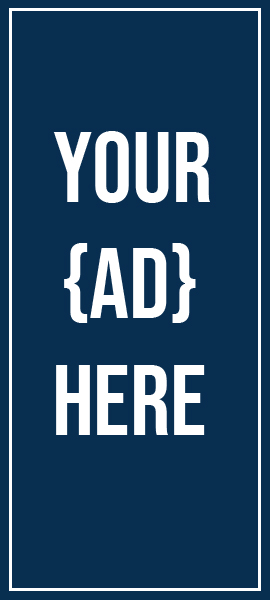
Strategies to Improve
Never use a 50-cent word when a 10-cent word will do.
– Anonymous
You are eager to begin working on a new project, and the client requests that you present them with a proposal. While the clock is counting down to the deadline, you find yourself feeling overwhelmed while staring at a paper that is blank. Even if you have a clear idea of what you want to suggest, you’re having trouble coming up with material for it.
If you find yourself in this situation, the first thing you should do is give yourself a break. Even seasoned writers experience “writer’s block” from time to time, which is why it’s an expression in the first place. If you find yourself in this situation, the first thing you should do is give yourself a break. You are in luck since there are a few strategies that you can employ to make the process of writing a less agonizing one.
Make a document for the master notes
Creating a document that is already filled with content that you can use as a reference is an effective strategy for overcoming the anxiety caused by a blank document. In spite of the fact that you have never sent in a proposal before, you have content at your disposal that can serve both as a source of ideas and as a foundation for your proposal.
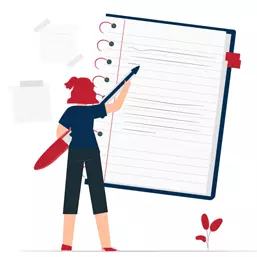
Of course, if you have submitted proposals in the past, then those can help you get started with the most recent proposal (just make sure that you don’t reuse any content that is specific to a certain client or include the wrong client’s name!). However, if this is your first time submitting a proposal, then it is highly recommended that you do not submit a proposal.
To begin developing this proposal, the first step is to search for any and all content that is pertinent to the proposal. Past proposals, a proposal content library, sales presentations, case studies, white papers, your website, blog posts, webinars that you’ve conducted, email content, internal procedure documents, and really anything connected to what you’re presenting might serve as examples of content sources.
Copy any relevant information that you discover and paste it into the Notes document. In a perfect world, you would put content that is linked together, such as information about the firm, content about the solution, information about the personnel, etc., but if you’re having trouble even creating an outline, just paste the content without any sort of order. As you go through the associated documents, you will gradually compile a very extensive document that you may use as a source of creative ideas.
Brief check
Make sure to also copy over any graphics or photos that can be useful for your proposal!
Once your proposal is written, it’s time to check it for clarity and readability. The following are some tools to do just that.
Checking for Clarity
Use the following checklist to help make sure your writing will be clear to your readers.
Have I used words with their correct meaning and in their correct context?
Have I used punctuation appropriately?
Have I used jargon or slang? Should I explain myself?
Have I used the active voice wherever possible?
Are my sentences clearly constructed?
Do my paragraphs transition well?
Have I primarily used the third person?
Does each paragraph have a logical beginning, middle, and end, focused around one idea?
Does each paragraph, sub-section, and section tie back to the goal statement?
Reading for Your Audience
As a final check for clarity, try to anticipate any questions that your audience may have. Things to check for include:
Have you used jargon that needs to be explained?
Have you written at an appropriate level?
Are all sections written for the correct audience? (For example, if you have written a technical proposal, the body may be written for a technical audience, while the executive summary may be written at a higher level.)
Have you provided enough background information?
Do your supporting points clearly lead to a conclusion?
If at all possible, have someone similar to your audience read your proposal and highlight areas that need clarification.
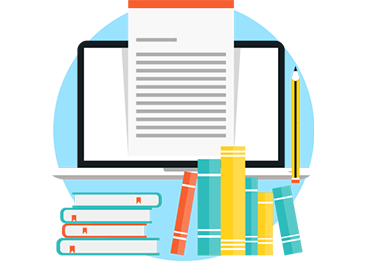
Using the Readability Index
Another tool for checking the clarity of your writing is the Gunning Fog Index. The index takes a sample of writing, performs calculations on it, and outputs the level of education (for example, Grade 9) that a person will theoretically need to read it.
Most business documents, including proposals, should be written at a grade eight or nine level.
Here’s how to use the index. First, mark out a full passage of about 100 words. (Don’t cut sentences off.) Then perform the following calculations:
- Count the number of words.
- Count the number of sentences.
- Divide the number of words by the number of sentences. This will give you the average sentence length.
- Count the number of words with three or more syllables (also known as polysyllabic words). Exclude the following words: proper names, jargon, compound words, and words with a suffix (such asing,es,ed, and etc.).
- Divide the number of polysyllabic words by the number of words in the passage. Multiply by 100. This is the percentage of complex words in the passage.
- Add the average sentence length to the percentage of complex words.
- Multiply this total by 0.4 to get your fog factor.
Proposal Development
Have you conducted an in-depth and original analysis of the demands of the client?
Have you developed a comprehensive plan based on the statement of the need?
Have you made sure that there is continuity and consistency across the proposal?

Compelling Content
Is there a market for the innovative approach?
Are there any inaccuracies after conducting a thorough check?
Does the approach have any evidence or sample data to back it up?
Is it evident that the proposed remedy will be beneficial?
Have you removed every ambiguity, as well as any generalizations or abstractions?
Is there an excessive amount of detail without an accompanying sense of overview or perspective?
Is the proposal geared toward the customer or more toward us?
Create an Interesting Environment for Your Organization
Are the reader’s interests piqued by the cover letter and executive summary?
Is there a single, coherent, and compelling argument in support of the proposal? Exists a single overarching strategy to which everything else can be mapped?
Are the components grouped in a way that makes sense and adheres to logic?
Is there a conclusion that summarizes each of the major sections?
Have you organized the content with the reader in mind at any stage in the process?
Are my headlines easy to understand, grammatically correct, and parallel?
Is each part written so that it focuses on (1) the client’s demand, (2) the solution, and (3) the details that support it?

Obtain the Appropriate Appearance
Are you able to grasp the meaning of the sentences easily?
Is the correct usage of all jargon and technical words demonstrated?
Have you avoided clichés?
Is there a clear summary of the proposal?
Is the level of writing suitable for the person who will be reading it?
The data and statistics shown here are reliable
Check for problems in language, usage, spelling or typing?
Verify that there are no errors in the names, titles, dates, fees, or any other facts.
Check to see if the proposal is well organized, presented in a professional manner, and is simple to read.
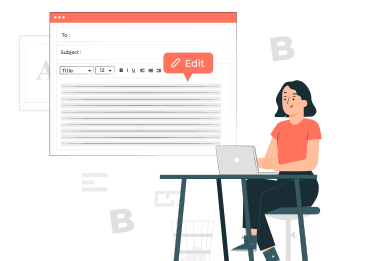
Create a First Draft
When you have content that can serve as a source of inspiration on hand, it is time to produce your first draft! Creating an outline is an easy initial step to take before beginning to write content, but you will need to start with a blank page because this stage requires starting from scratch. You can use this format even if the client didn’t supply a specific one or a request for proposal (RFP).
Once the outline has been developed, you can move on to developing the content. Maintain an open window for the document containing your notes and paste relevant text into the proper parts. You have the option of including all of the notes or picking and choosing which parts of the content to publish. When you have finished inserting your notes, you can then begin rewriting the text so that it speaks specifically to the client and what you are proposing to them. It is almost always far simpler to revise existing content than to create new content from beginning.
As a helpful hint, compile a list of the recurring themes that you wish to emphasize throughout your proposal. This will be of use to you in revising the material and tailoring it to this particular proposal.
Make some graphics
If producing visual aspects comes more naturally to you than writing material, you should prioritize the creation of graphics or the acquisition of photographs to include with the text in your proposal. It is common practice to incorporate images in proposals in order to make them easier to understand. If developing content is not one of your strengths, then including graphics is the ideal option to boost your proposal.
A helpful hint is to use a variety of pictures, illustrations, callouts, and other features within the proposal in order to break up the text and make it simpler to read.
Put an end to any and all distractions.
If you’re having trouble writing your proposal, the greatest method to speed up the process is to get rid of any distractions that may be getting in the way. This one may sound like common sense, but it’s important to remember. This necessitates, at the very least, silencing your phone, disabling email notifications (if that’s an option), activating the “Do Not Disturb” button on any and all chat functions, and shutting any windows or programs that you could otherwise utilize as a source of distraction. If you feel that your phone is extremely distracting, put it somewhere that you can’t see it, or even in another room, so that you won’t be tempted to grab for it.

When it comes to developing content, noise interruptions might be another major obstacle. A lot of writers have a specific playlist that they listen to while they write to help them block out distractions and get more motivated to write. Check out this list of playlists dedicated to writing, or use Noisli to make your own background noise.
Experiment with a variety of approaches to find out which one suits your needs best. If you’re not sure what to do, select songs from your playlist that don’t have lyrics; otherwise, you can end yourself writing the words to the music instead of the words to your proposal.
A helpful strategy for maintaining concentration while drafting your proposal is to put on headphones and listen to music, even if you are home alone. When there is no background noise, it might be challenging to come up with new ideas for your content.
The Pomodoro Technique should be utilized
Utilizing the Pomodoro Technique during times when you just are unable to remain still for the length of time necessary to complete a proposal will allow you to incorporate breaks into the process. A timer is used in this method of managing one’s time, and the focus is placed on accomplishing as much work as possible within the allotted amount of time.
When the timer beeps, you go away for a few minutes to regroup before going back to do the task once more. To begin, there will be a 25-minute on period followed by a 5-minute break. Once you get going, it will probably become easier for you to keep working, so don’t procrastinate!
Practical Application
Larry met with Nina, who had read over the first draft of his sales proposal. From her compliments, it appeared that most of his proposal was well-written and answered the questions that his audience would want answered. Nina said, “May I offer some constructive criticism?”
“Sure,” Larry said. “I don’t see how the proposal can improve without some criticism.”
Nina said, “I remember that you told me that you come from a background in technical proposal writing. While that definitely prepared you for writing a sales proposal, some of the jargon you used might be great for a technical proposal, but definitely stood out on this proposal.”
“What do you think I should do?” Larry asked.
Nina said, “My advice? Either explain the jargon well enough that your customer understands, or just replace it altogether with sales terms.”
Larry took Nina’s advice, and it improved his sales proposal.
